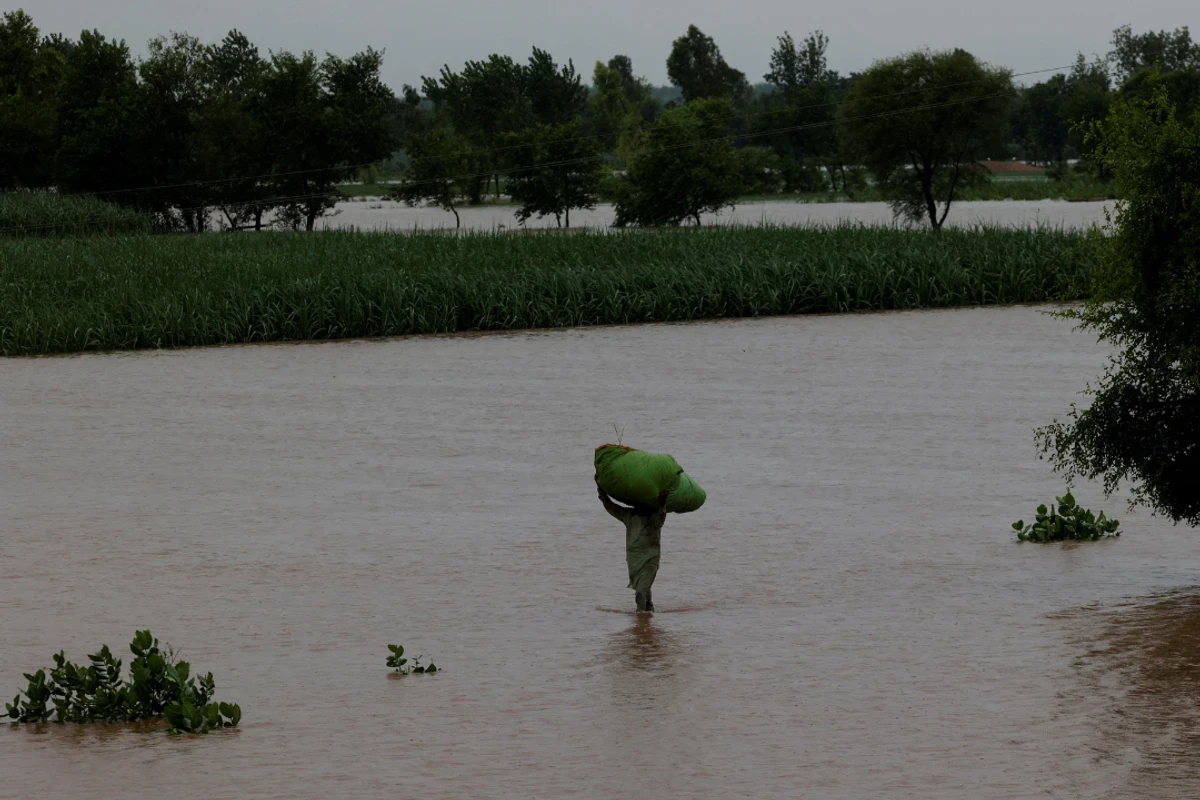Floods, heavy rains threaten Pakistan’s cotton crop
Despite a 9% rise in arrivals, experts warn yields and quality face severe risks as Punjab and Sindh fields remain inundated
Business Desk
The Business Desk tracks economic trends, market movements, and business developments, offering analysis of both local and global financial news.

A man carries a sack of fodder on his head as he walks along a flooded road, following monsoon rains and rising water levels of the Chenab River, in Patraki village, Chiniot district, Punjab province, Pakistan
Reuters
The recent heavy rains and widespread flooding have posed a serious threat to the cotton crop across the country, according to Ehsan-ul-Haq, chairman of the Cotton Ginners Forum.
In Punjab, key cotton-producing zones such as Multan, Bahawalpur, Bahawalnagar, Dera Ghazi Khan, Muzaffargarh and Rahim Yar Khan have been heavily affected by continuous rains and flooding, he said.
Similarly, in Sindh, cotton-growing areas including Ghotki, Sukkur, Nawabshah, Khairpur Mirs, Hyderabad, Sanghar, Mirpur Khas and Badin are also under the grip of heavy rainfall and flood conditions.
Ehsan-ul-Haq warned that the adverse weather conditions not only threaten to reduce the overall national cotton yield but also risk affecting the quality of raw cotton, cottonseed, oilcake and cottonseed oil.
He further said the negative weather patterns have significantly slowed down production activities across the cotton industry, as well as the transportation of cotton products.
In addition, a downward trend in cotton prices is also being observed in the market, he added.
Pakistan’s cotton arrivals showed a 9% year-over-year improvement as of Aug. 31, 2025, reaching 1.336 million bales compared with 1.226 million bales during the same period last year, according to data from the Pakistan Cotton Ginners Association released last week.
The increase in cotton arrivals is attributed to higher inflows from both Punjab and Sindh. In Punjab, cotton arrivals rose by 3%, reaching 466,000 bales compared with 453,000 bales in 2024.
In Sindh, cotton arrivals increased by 13%, totaling 870,000 bales compared with 773,000 bales during the same period last year.
However, experts are raising concerns about the sustainability of this improvement, as severe flooding in key agricultural regions, especially in Punjab, has devastated large swaths of fertile land. The floods have caused significant damage to major crops, including rice, sugarcane, maize, vegetables and cotton.










Comments
See what people are discussing